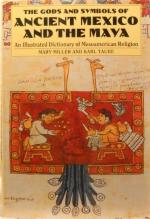|
This section contains 2,197 words (approx. 8 pages at 300 words per page) |

|
Religious practices during Mesoamerica's Preclassic, or Formative, period (1500 BCE–250 CE) can only be inferred from the archaeological remains. One of the most thoroughly investigated regions is the lacustrine Basin of Mexico in the central highlands, where remains of pottery and figurines provide a yardstick for determining the cultural sequence within the Basin and adjacent regions. Throughout the Preclassic this region witnessed a steady population increase and a locally diverse progression from small farming communities with developing social stratification to large towns with complex political hierarchies. The period is divided in four major phases. Different time spans for the major phases, as well as local subphases, have been proposed by various researchers. These are consolidated in the following chronology: Early Preclassic, 1500–800 BCE; Middle Pre-classic, 800–500 BCE; Late Preclassic, 500–150 BCE; Terminal Preclassic, 150 BCE–250 CE. (Piña Chan, 1972; Sanders et al., 1979).
Basin of Mexico
During the Early Preclassic, the Ixtapaluca...
|
This section contains 2,197 words (approx. 8 pages at 300 words per page) |

|




